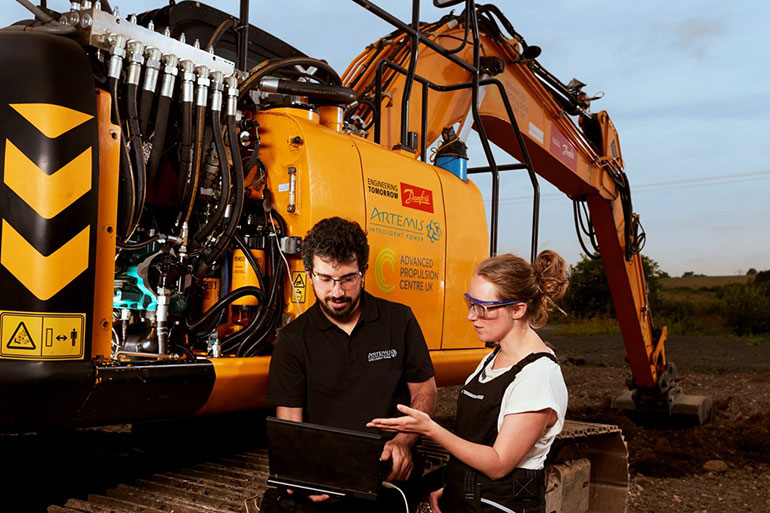It’s barely February and we already know the fluid-power industry’s news of the year: Danfoss is acquiring Eaton Hydraulics for $3.3 billion. It paints a stark contrast between two corporations’ view of the future of hydraulics.
Eaton’s CEO Craig Arnold said the sale “is part of the ongoing transformation of Eaton into a higher growth company with better earnings consistency.” One might say, in less polite terms, they’re happy to unload this cyclical laggard that’s been a drain on profits and, instead, focus on selling electrical motors, switches and power supplies.

On the other hand, said Eric Alström, President of Danfoss Power Solutions, “Hydraulics is our core, and we have for years strengthened our business through high customer focus, as well as through significant investments in technology leadership. I believe our customers will benefit from combining these two businesses into a full-line hydraulics player dedicated to innovation and with a broad offering of products, robust distribution channels and tremendous geographic reach.”
His comments are in line with a presentation on the company’s R&D efforts at the recent Fluid Power Technical Conference hosted by Fluid Power World in Cleveland. Senior Systems Engineer Simon Nielsen said, “It’s part of our Danfoss DNA that as the times change we invest and innovate to remain successful. And that’s what we have especially been doing the last few years.”
He cited electrification as a global megatrend that holds strong potential in fighting pollution and climate change. In the mobile-equipment arena that means intelligently melding hydraulics and electric drives, and Danfoss intends to be a key player in that transformation. “It will create new opportunities in our markets, even though hydraulics market share will undoubtedly decline over time,” he said.
Recent moves back that up. They’ve acquired Ducato and Axco Motors out of Finland and UQM in Colorado that bring years of experience in mobile electrification; and formed a strategic partnership with Autonomous Solutions Inc. to tap expertise in driverless machines. On the hydraulics side, they purchased Artemis Intelligent Power, whose digital-displacement pumps (DDPs) are fast, accurate and extremely efficient, even at low flows and partial loads. Experts say the technology, which minimizes power losses in hydraulic circuits, could be a “game-changer” for electrification.
The main concerns with battery electric vehicles are range, battery size and cost. There is an ongoing effort among OEMs to increase efficiency and downsize the batteries, and the DDP is a tool to do just that, said Nielsen. Tests show that battery-powered excavators that use digital displacement pumps and improved control-valve architecture could achieve the same working capability with 20% to 25% less battery capacity. And on diesel-powered excavators, changing to a DDP results in double-digit percent increases in productivity and fuel economy.
“Any improvements in drivetrain efficiency, especially hydraulic system efficiency, will continue to have merit, not only for battery electric vehicles where it translates directly into range and battery size, but on any system that is seeking to minimize fuel consumption and reduce emissions,” he said.
Many companies are joining the electric revolution, ranging from traditional engine manufacturers to producers of gearboxes and axles. Astute hydraulic suppliers hold some key advantages, given decades of experience working with continuously variable transmissions, hybrid designs, vehicle power management systems and customized application software.
Danfoss aims to combine the most modern hydraulic technology with the best in electric powertrain technology, he continued. “My point is that we don’t see this as an either/or situation. We have taken the role of becoming a multi-technology specialist, we think it’s an inevitable symbiotic meshing of technology that is taking place over time.”






